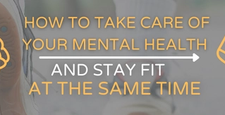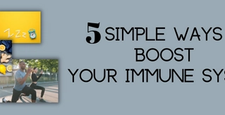Learn How to Build Good Habits and Break Bad Ones
(Even if You’ve Failed in The Past)
Do our habits create our future reality?
If you ask me — yeah, I think they do.
As the saying goes: “We first make our habits then our habits make us” - John Dryden.
If that’s not a punch in the face and a wakeup to reality I don’t know what is. With that in mind — this is why it’s vital we know how to build good habits and break bad ones.
You know what it’s like, that one habit you know is no good for you — yet for some reason, you just can’t break it.
Time and time again, you tell yourself I’m going to do it this time around. Only to experience another failure and setback.
The problem is as James Clear puts it. “You do not rise to the level of your goals. You fall to the level of your systems.”.
It’s the systems you’ve put in place that have failed you. Not you.
And in this blog post you’re going to learn the systems that will help you succeed in building new habits and breaking old ones.
Most of the ideas I will be talking about come from the best seller “Atomic Habits” by James Clear.
So what do you say? Keep reading to find out more!
The Basic Anatomy of a Habit
Every habit in our lives follows the same 4-step protocol.
It goes something like this:
1. Cue (E.g. Smoker get’s stressed out)
2. Craving (E.g. Smoker craves a cigarette)
3. Response (E.g. Smoker lights up a cigarette)
4. Reward (E.g. Smoker enjoys his cigarette)
The same steps apply to good habits as well. Understanding each step allows you to step back and become more aware of your actions.
In doing so you can begin to implement systems that will allow you to build good habits and break bad ones.
So, let’s talk about those systems.
How to Build Good Habits and Break Bad Ones
There are four major components to building and breaking habits:
1, Make it obvious or invisible
2. Make it attractive or unattractive
3. Make it easy or hard
4. Make it satisfying or unsatisfying
So, how do these systems work?
Make it Obvious or Invisible
The first step to building good habits and breaking bad ones is to make them obvious or invisible.
You might be thinking “what the heck is this guy talking about?”.
Here’s how it works. Let’s create an imaginary character named Stacy.
Stacy wants to start walking more and she also wants to stop eating so many cookies.
(Who doesn’t love cookies).

Because Stacy is a smart cookie (see what I did there). She decides to do these three things to make the habit more obvious:
1. Intentional implementation — She writes down and tells herself she’s going to do a twenty-minute walk at 6 pm at the park.
2. Stacking habits — Stacy knows she likes to watch YouTube around 530 pm. She decides to stack this habit with the habit of walking. As soon as she finishes watching YouTube, she goes for her walk.
3. Design her environment — Stacy normally keeps her running shoes hidden in the back of her closet. She takes them out and leaves them at the front door. This acts as a visual cue for her to go for her walk.
As for her cookie-eating habit (yum). She used to leave them out in the open for all eyes to see. She now hides the cookies deep in her cupboard. Out of sight and out of mind.
This eliminates the visual cue of the cookies.
Make it Attractive or Unattractive
Her next step in habit building and breaking is to make it either attractive or unattractive.
Stacy decides to use a few methods to make it attractive to build her new habit of walking.
She does this by:
1. Making it tempting
2. Joining a culture of like-minded people
She loves listening to music, so she decides to bring her headphones with her on her walks.
She also starts to surround herself with more people who are working on their fitness. She joins a local walking group and surrounds herself with like-minded people.
As for Stacy's cookie-eating habit, she gets a piece of paper and highlights all of the potential benefits of stopping the habit.
Make it Easy or Difficult
Were designed to look for the easy way out. When we face a lot of friction — oftentimes we’ll give up.
Good news for Stacy (and you) — she can use this to her advantage.
Stacy decides to change into her running clothes before leaving work. And continues to leave her running shoes at the front door.
She does everything in her power to make the effort of going for a walk seamless and easy. She reduces friction and shortens the steps that are needed to be taken to go for her walk.
On the other end of the spectrum, she decides to make her cookie addiction difficult to continue.
She does this by not buying cookies anymore at the grocery store. And she only carries the exact amount of cash she needs for groceries. Leaving her credit and/or debit card at home.
The goal is to make the habit your building easy to do and the one you’re trying to break difficult to do.
Make it Satisfying or Unsatisfying
The final chapter — make your good habits satisfying and your bad habits unsatisfying.
After every walk, Stacy treats herself to a long warm bath. She also starts tracking her habits using a habit tracker. The desire to not break the chain of green checkmarks keeps her disciplined with the habit.
You can do this on paper, and there are even apps you can use.
On the days that she doesn’t walk, she makes it a top priority to not miss it the next day.
(In other words — if you miss a day, that’s ok. Just make sure you do it the next day).
As for her cookie appetite. She gets an accountability partner and she creates a habit contract with a friend.
In the contract, it states: “I Stacy, cookie loving queen solemnly swear I will pay my friend Rebecca $100 dollars if I consume more than one cookie this week”.
Now, not only does she have an accountability partner that makes sure she’s on track but she also just made it expensive for herself to eat more than one cookie a week.
Conclusion — How to Build Good Habits and Break Bad Ones
At the end of the day, your ability to build good habits and break bad ones can really dictate the quality of your life.
So often we get stuck in these unconscious behavior patterns that make us who we are.
If you remember to stick to the four principles:
1. Make it obvious or invisible
2. Make it attractive or unattractive
3. Make it easy or hard
4. Make it satisfying or unsatisfying
You’re well on your way to creating new habits, new routines, and a new you!…
If you want to make things easier for yourself, get involved with the Yes.Fit community. Download the app and surround yourself with like-minded people who are also on their journey of self-improvement and fitness!



















